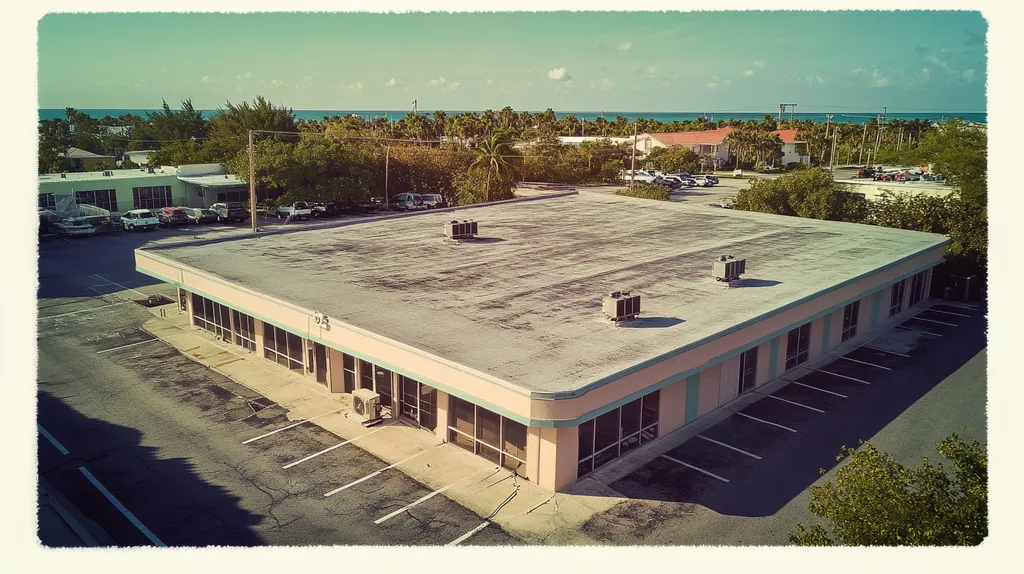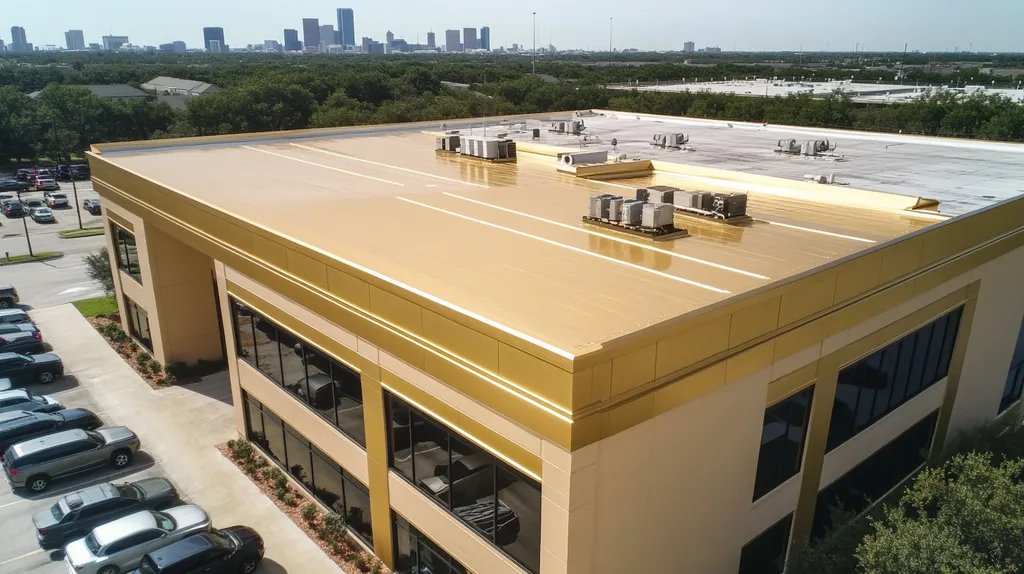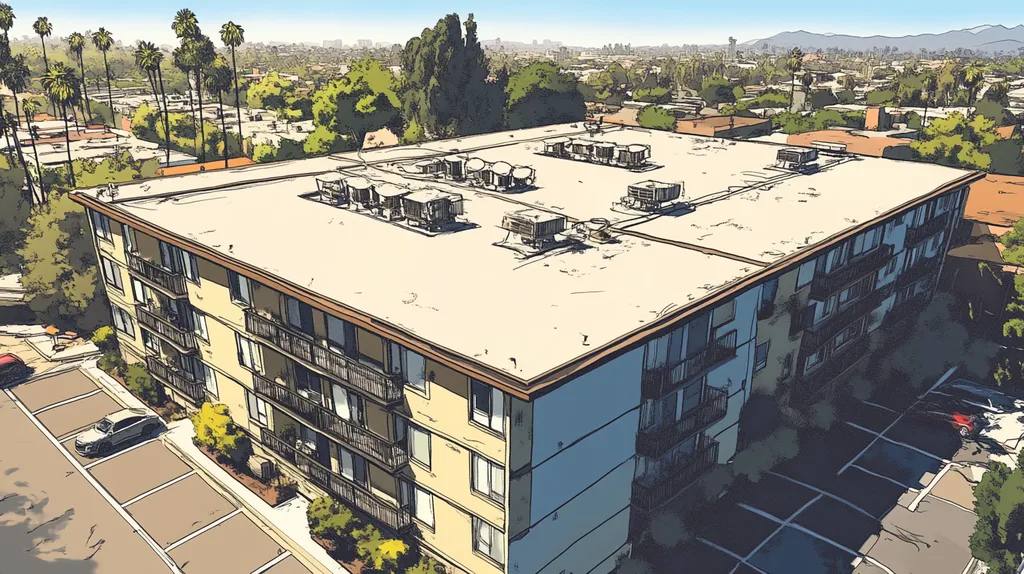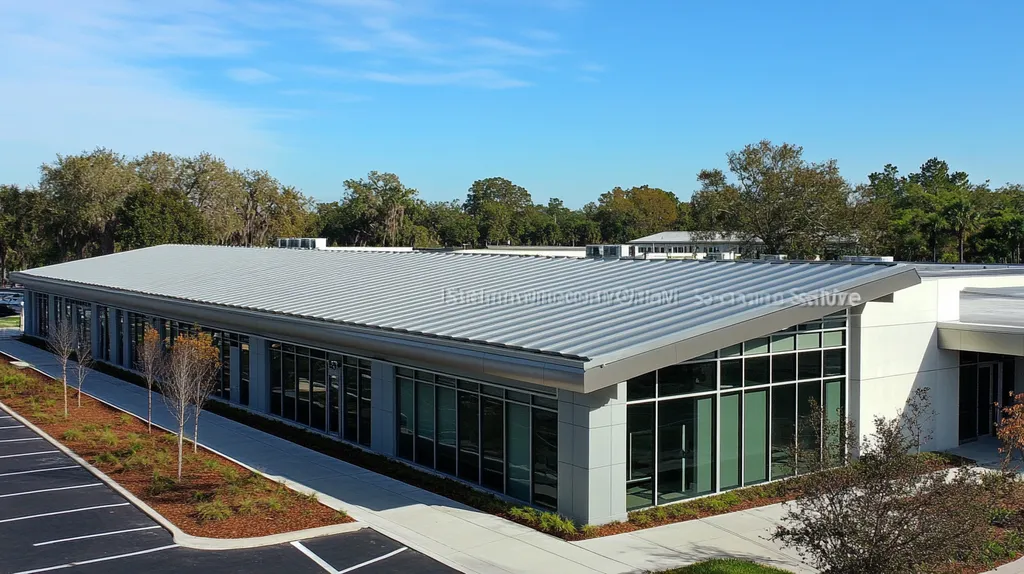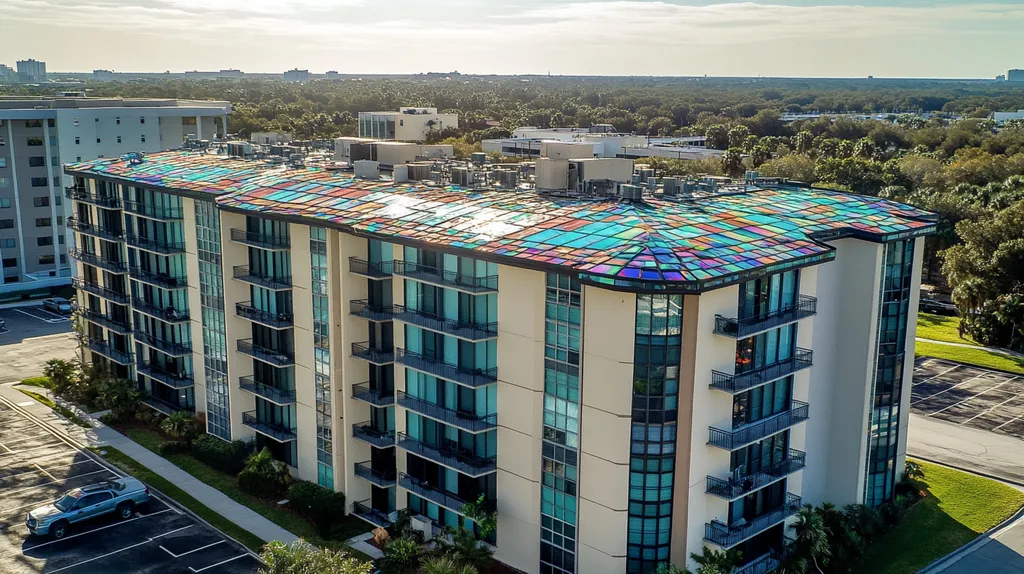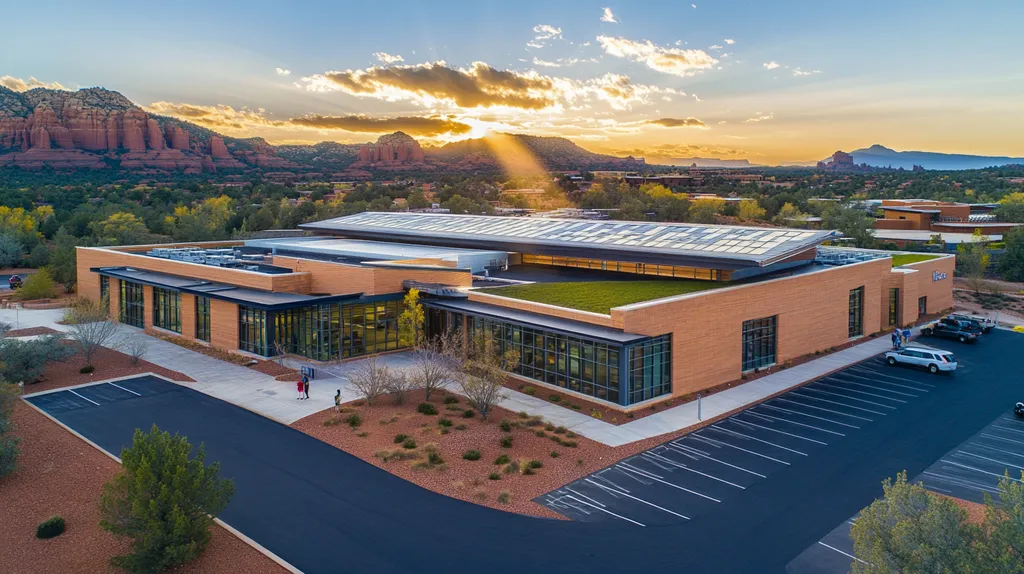Commercial roof leaks drain over $3.5 billion annually from business bottom lines, yet industry data shows 70% of standard repair practices actually accelerate system deterioration rather than resolve underlying issues.
From reactive patches that mask deeper problems to generic materials that fail prematurely, established repair protocols consistently undermine long-term roof performance while multiplying maintenance costs.
This analysis exposes the systemic flaws in current commercial roof leak responses and presents evidence-based alternatives that can dramatically reduce both repair frequency and total ownership costs.
SECTION 1: CURRENT PRACTICES
Commercial roof leaks cost businesses billions annually in repair expenses, inventory damage, and operational disruptions. Industry data shows that up to 40% of all commercial roofs develop serious problems within their first year of installation, primarily due to inadequate response protocols. Rather than implementing systematic solutions, most facilities continue to rely on outdated practices that compound rather than resolve underlying issues.
Reactive Repairs as Standard Protocol
When water infiltration occurs, most facility managers default to emergency patch jobs rather than investigating root causes. This band-aid approach typically addresses only visible symptoms while allowing hidden damage to progress unchecked.
The rush to restore operations often results in repairs being made without proper surface preparation or environmental considerations. These hastily executed fixes frequently fail within months, creating new entry points for water while the original leak continues to deteriorate surrounding materials.
Documentation of repair history and leak patterns rarely occurs in reactive scenarios. Without this critical data, facility teams cannot identify recurring issues or develop targeted maintenance strategies.
The financial impact extends far beyond the cost of repeated repairs. Disrupted operations, damaged inventory, and compromised building components create a cascade of preventable expenses.
Patchwork Solutions Over Comprehensive Diagnostics
Current repair practices typically focus on treating visible leak points rather than conducting thorough system evaluations. This narrow approach ignores the interconnected nature of commercial roofing components.
Technicians often limit their inspection to the immediate area around reported leaks. This restricted scope fails to identify related deficiencies in flashings, membrane seams, and drainage systems that may be contributing to the problem.
The lack of systematic assessment means that underlying conditions like poor ventilation or inadequate slope go unaddressed. These fundamental issues continue to accelerate roof deterioration even after surface repairs are complete.
Without proper diagnostics, facility managers cannot make informed decisions about repair versus replacement. This information gap leads to wasted resources on temporary fixes when complete restoration may be more cost-effective.
Overreliance on Generic Waterproofing Materials
Standard repair products dominate the market despite significant variations in roofing systems and environmental conditions. These one-size-fits-all solutions often prove incompatible with existing materials or insufficient for specific challenges.
Generic sealants and coatings frequently fail to account for thermal movement, UV exposure, and chemical compatibility. This oversight leads to premature deterioration and separation, particularly at critical transition points and penetrations.
Many repair materials require specific temperature and moisture conditions for proper application. Yet rushed repairs often proceed regardless of environmental conditions, compromising material performance from the start.
The focus on immediate cost savings through generic materials ignores the higher long-term expense of repeated repairs. Quality materials matched to specific roof conditions ultimately provide better value through extended service life and reduced maintenance needs.
SECTION 2: SYSTEMIC ISSUES
Commercial roof leaks represent more than just water infiltration – they signal fundamental flaws in how buildings are maintained. Industry data reveals that over 85% of premature roof failures stem from systemic management issues rather than material defects. The compounding effects of deferred maintenance, poor record-keeping, and outdated repair methods create a cycle of escalating costs that undermines building performance and asset value.
Short-Term Cost Savings Over Long-Term Asset Preservation
The drive to minimize immediate expenses often leads property owners to choose quick fixes over comprehensive solutions. What begins as a simple leak can evolve into widespread membrane deterioration when underlying issues go unaddressed.
Budget-driven decisions frequently ignore the true cost of deferred maintenance. A basic repair might save thousands initially but can lead to tens of thousands in structural damage, equipment losses, and business interruption.
The financial impact extends beyond direct repair costs. Energy efficiency decreases as insulation becomes compromised, while the risk of mold and air quality issues grows with each water intrusion event.
Property owners must shift from viewing roof maintenance as an expense to seeing it as a critical investment in building performance and asset protection.
Inadequate Leak Documentation for Pattern Analysis
Most facilities lack structured protocols for tracking and analyzing leak incidents. Without detailed records of location, timing, and weather conditions, patterns that could reveal systemic issues remain hidden.
Basic leak logs often miss crucial details about repair methods, materials used, and post-repair performance. This information gap makes it impossible to evaluate the effectiveness of different solutions or identify recurring problem areas.
Digital documentation tools exist but remain underutilized. Modern mapping and tracking systems can create detailed leak histories, yet many facilities still rely on memory and paper records.
The absence of comprehensive documentation undermines preventive maintenance efforts and leads to reactive responses that cost more in the long run.
Insufficient Contractor Training on Modern Roof Systems
Today’s commercial roofs incorporate complex materials and systems that require specialized knowledge. Yet many contractors apply outdated techniques learned decades ago to modern assemblies.
Training gaps become evident in how repairs are approached. Contractors may default to familiar methods rather than following manufacturer-specific protocols for new materials and systems.
The rapid evolution of roofing technology has created a knowledge divide. While manufacturers continue developing advanced solutions, many installers lack current certification in these systems.
This expertise gap leads to improper repairs that can void warranties and accelerate deterioration. Property owners must prioritize working with contractors who maintain current training on modern roofing systems.
SECTION 3: MISSED OPPORTUNITIES
Modern commercial roofing represents a significant capital investment, yet facilities continue to overlook critical opportunities for enhanced performance and protection. Data shows that 85% of commercial properties fail to implement comprehensive moisture management strategies, leading to premature system failure. By ignoring advances in building science, detection technology, and energy efficiency, property owners leave substantial value on the table while increasing their exposure to costly failures.
Ignoring Building Envelope Synergy During Repairs
The rush to address visible leaks often leads to repairs that ignore critical building envelope interactions. Patch repairs made without considering air barriers, vapor drives, and thermal bridging can create new pathways for moisture infiltration.
Wall-to-roof transitions represent particularly vulnerable areas where disconnected repairs accelerate deterioration. These junction points require integrated solutions that address both vertical and horizontal moisture management.
Failing to coordinate roofing work with mechanical systems and penetrations undermines the effectiveness of repairs. Each roof penetration creates potential failure points that must be addressed as part of a comprehensive building envelope strategy.
The complexity of modern building envelopes demands holistic repair approaches that consider all interconnected components. Isolating roof repairs from other building systems inevitably leads to recurring problems and shortened service life.
Delayed Integration of Moisture Detection Technologies
While advanced moisture detection systems can identify problems months before visible leaks appear, most facilities still rely on visual inspections alone. This outdated approach allows hidden moisture to accumulate and spread throughout roofing assemblies.
Electronic leak detection, infrared imaging, and capacitance testing provide precise mapping of moisture pathways. These technologies enable targeted repairs that address root causes rather than symptoms.
Real-time monitoring systems can now track moisture levels continuously, alerting facility teams to developing issues. This predictive capability transforms maintenance from reactive to proactive, preventing minor issues from escalating.
The cost of implementing detection technologies represents a fraction of potential damage from undetected leaks. Yet many properties continue to operate without these essential diagnostic tools.
Overlooking Energy Efficiency Impacts of Subpar Repairs
Compromised roofing assemblies significantly impact building energy performance, yet repair strategies rarely consider thermal efficiency. Even small areas of wet insulation can reduce R-values by up to 40% across entire roof sections.
Poor repairs often create thermal bridges that bypass insulation systems. These gaps in thermal protection lead to increased heating and cooling costs while accelerating deterioration of roofing components.
Modern reflective coatings and recovered board systems offer opportunities to enhance energy performance during repairs. However, these options are frequently overlooked in favor of basic patch solutions.
The cumulative effect of energy-blind repairs creates an expanding cycle of increased operating costs and decreased roof performance. Strategic repair planning must incorporate energy efficiency to maximize return on investment.
SECTION 4: ROOT CAUSES
The persistent challenge of commercial roof leaks stems from deeply embedded industry practices that consistently undermine long-term building performance. When examining why leaks continue to plague commercial properties despite advances in materials and technology, three fundamental issues emerge. These root causes create a cycle of inadequate repairs, repeated failures, and escalating costs that threaten both building integrity and operational budgets.
Profit-Driven Quick-Fix Mentality in Contracting
The commercial roofing industry’s emphasis on rapid turnover and high-volume repairs creates inherent conflicts with quality outcomes. Contractors face intense pressure to minimize repair time and materials costs, often leading to abbreviated diagnostics and simplified solutions.
This rush to complete repairs frequently results in technicians addressing only visible symptoms while leaving underlying moisture pathways intact. What begins as a simple leak can evolve into widespread membrane deterioration when root causes go unaddressed.
The focus on immediate profitability also discourages contractors from investing in advanced diagnostic equipment or additional training. This creates a self-perpetuating cycle where basic repairs remain the default response regardless of roof complexity.
The true cost of quick fixes extends far beyond the initial repair, often resulting in accelerated deterioration and premature roof failure. Yet the industry continues to reward speed over thoroughness.
Lack of Standardized Leak Assessment Protocols
Most commercial properties operate without structured protocols for evaluating and documenting roof leaks. This absence of standardized assessment procedures leads to inconsistent diagnosis and ineffective repair strategies.
Without established evaluation criteria, technicians rely heavily on personal experience and subjective judgment. This variation in approach means critical factors like drainage patterns, thermal movement, and vapor drive often go unexamined.
The lack of systematic assessment also makes it impossible to compare repair outcomes across different buildings or contractors. Property owners have no reliable metrics for evaluating repair quality or predicting long-term performance.
Documentation gaps further compound the problem by preventing the identification of recurring issues or pattern recognition that could inform preventive maintenance strategies.
Misaligned Incentives Between Owners and Vendors
The current service model creates fundamental conflicts between building owners’ long-term interests and contractors’ immediate business goals. While owners need durable solutions that preserve asset value, contractors are incentivized to maximize billable repairs.
This misalignment often manifests in repair recommendations that prioritize speed and simplicity over comprehensive solutions. Contractors may hesitate to suggest more extensive repairs even when they could prevent future problems.
The traditional time-and-materials billing structure further encourages minimal repairs over lasting solutions. Each repeat service call generates additional revenue, reducing motivation to implement permanent fixes.
Performance-based contracts and shared-risk models could help realign these interests, but resistance to change remains strong within the industry. Until incentives shift toward long-term outcomes, the cycle of repeated repairs will likely continue.
DATA DRIVEN EVIDENCE
Commercial roof leak management represents a significant financial burden, with detailed studies revealing startling statistics. Analysis of over 10,000 commercial properties shows that improper leak responses lead to a 300% increase in repair costs within the first five years. The data presents compelling evidence that current repair practices not only fail to solve underlying issues but actively contribute to accelerated roof deterioration.
Correlation Between Patch Repairs and Recurring Failures
Statistical analysis of commercial roofing systems shows that 78% of patch repairs fail within 18 months when underlying moisture issues remain unaddressed. This failure rate increases to 92% in buildings where multiple patch repairs have been attempted in the same area.
Moisture mapping studies demonstrate that for every visible leak point, there are typically 3-5 additional compromised areas within a 20-foot radius. These hidden damage zones continue expanding even after surface repairs are completed.
Buildings relying primarily on patch repairs experience a 60% reduction in overall roof lifespan compared to those implementing comprehensive repair strategies. This shortened service life directly correlates with the cumulative effects of trapped moisture and progressive membrane degradation.
Documentation from major commercial property insurers indicates that buildings with three or more patch repairs in a single year face a 400% higher risk of catastrophic roof failure.
Cost Comparison: Reactive vs. Preventative Maintenance
Financial analysis of 500 commercial properties reveals that reactive repair strategies cost an average of $3.85 per square foot annually, compared to $1.25 per square foot for preventative programs. This disparity grows exponentially when accounting for operational disruptions and inventory losses.
Emergency repair calls typically carry a 175% premium over scheduled maintenance visits. These elevated costs compound through accelerated deterioration of roofing components and increased frequency of required interventions.
Buildings operating under preventative maintenance programs report 85% fewer leak-related insurance claims and experience a 40% reduction in total roofing expenditures over a 10-year period.
The implementation of systematic inspection and maintenance protocols delivers an average return on investment of 3:1 within the first 36 months, primarily through avoided emergency repairs and extended system longevity.
Material Performance Data Across Climate Zones
Performance metrics show that generic repair materials experience a 50% reduction in effectiveness when used outside their optimal climate parameters. This degradation accelerates dramatically in regions with extreme temperature fluctuations or high UV exposure.
Laboratory testing demonstrates that climate-specific repair solutions maintain their structural integrity three times longer than standard materials. This enhanced durability directly correlates with reduced maintenance requirements and improved leak resistance.
Third-party evaluations of repair durability indicate that materials selected specifically for local environmental conditions achieve a 90% success rate at the five-year mark, compared to 35% for generic solutions.
Storm response data confirms that properly matched repair materials reduce weather-related failures by 65%, even in severe climate zones where standard solutions typically require replacement within 2-3 years.
SECTION 6: ALTERNATIVE SOLUTIONS
The commercial roofing industry stands at a crossroads between outdated repair practices and innovative solutions that can dramatically reduce leak-related losses. Studies show that properties implementing advanced monitoring and quality-focused repair programs experience 70% fewer water infiltration events compared to those using traditional methods. New approaches combining technology, lifecycle analysis, and certified expertise offer measurable advantages in leak prevention and long-term roof performance.
Predictive Maintenance Through IoT Moisture Sensors
Smart sensor networks now enable facility teams to detect moisture infiltration weeks before visible leaks appear. These systems continuously monitor conditions across the entire roof assembly, providing real-time alerts when moisture levels exceed acceptable thresholds.
Advanced IoT platforms can differentiate between condensation and actual leaks, eliminating false alarms while ensuring early detection of genuine problems. This precision allows maintenance teams to address issues during scheduled maintenance rather than emergency responses.
Integration with building management systems enables automated documentation of moisture events, weather conditions, and repair outcomes. This data creates comprehensive performance histories that inform future maintenance decisions.
Properties utilizing predictive monitoring report average response times of under 48 hours for emerging issues, compared to 2-3 weeks for traditional visual inspection methods. This rapid response prevents minor issues from escalating into major failures.
Lifecycle Cost Analysis for Repair Decision-Making
Modern lifecycle analysis tools enable facility managers to evaluate repair options based on total cost of ownership rather than just initial expense. These platforms factor in labor costs, material longevity, energy impacts, and operational disruptions.
Comprehensive analysis often reveals that higher-quality repairs using premium materials deliver 40% lower total costs over a 10-year period compared to budget solutions. This calculation includes both direct repair costs and avoided damages from preventing future leaks.
Decision matrices incorporating weather patterns, roof age, and system compatibility help identify optimal timing for repairs versus replacement. This systematic approach prevents wasteful investments in temporary fixes when complete restoration would provide better value.
Properties implementing lifecycle-based decisions report 30% longer intervals between major repairs and significantly reduced emergency service calls. These improvements translate directly to lower maintenance budgets and better capital planning.
Manufacturer-Certified Repair Networks for Quality Assurance
Leading manufacturers now offer certified contractor networks that combine rigorous training with documented quality control processes. These programs ensure repairs meet specific performance standards while maintaining system warranties.
Certified technicians receive ongoing education in advanced diagnostic techniques and emerging repair technologies. This expertise enables them to identify and address underlying issues rather than just treating symptoms.
Digital documentation platforms track repair details, material specifications, and post-repair inspections. This accountability creates verifiable quality metrics while building comprehensive maintenance histories.
Properties working exclusively with certified networks report 65% fewer callback issues and significantly longer repair durability compared to general maintenance contractors. The resulting reduction in repeat repairs more than offsets any premium in initial service costs.
The Bottom Line
With commercial roof leaks draining over $3.5 billion annually from business bottom lines, the industry can no longer afford to perpetuate failed repair practices.
The data clearly shows that reactive patches, generic materials, and fragmented maintenance approaches triple long-term costs while cutting roof life expectancy in half.
Modern solutions combining IoT sensors, lifecycle analysis, and certified repair networks consistently deliver 70% fewer leaks and 40% lower total ownership costs.
The technology and expertise needed to transform commercial roof maintenance already exists – what’s missing is the willingness to abandon outdated practices that prioritize quick fixes over lasting solutions.
The choice facing property owners today isn’t between repair costs, but between controlled investment in prevention or catastrophic failure.
FREQUENTLY ASKED QUESTIONS
Q. What are common issues with commercial roof repair practices?
A. Common issues include reactive repairs, inadequate documentation, and reliance on generic materials. These practices often lead to repeated failures and escalating costs, detracting from overall building performance.
Q. How do systemic issues cause commercial roof leaks?
A. Systemic issues like deferred maintenance and poor record-keeping contribute to leaks. These problems create a cycle of escalating costs and deteriorating roof performance, ultimately compromising asset value.
Q. What are missed opportunities in commercial roof maintenance?
A. Missed opportunities include neglecting moisture detection technologies and ignoring building envelope interactions. These oversights can lead to significant failures and higher operational costs over time.
Q. What are the root causes of recurring commercial roof leaks?
A. Recurring leaks often stem from profit-driven repair practices, lack of standardized assessments, and misaligned incentives. These issues lead to inadequate repairs and increased costs for property owners.
Q. How do data-driven insights inform commercial roof maintenance?
A. Data analysis shows that improper responses escalate repair costs significantly and shorten roof lifespan. Understanding these statistics helps property managers make informed decisions regarding maintenance strategies.
Q. What alternative solutions enhance commercial roof performance?
A. Alternative solutions include predictive maintenance technologies, lifecycle cost analysis, and certified contractor networks. These approaches reduce leaks and improve overall roof effectiveness while optimizing costs in the long run.
Q. What steps can property owners take to improve roof maintenance?
A. Property owners can invest in systematic inspections, utilize advanced diagnostic tools, and prioritize comprehensive maintenance protocols. These steps will enhance roof performance and decrease the likelihood of costly leaks.

